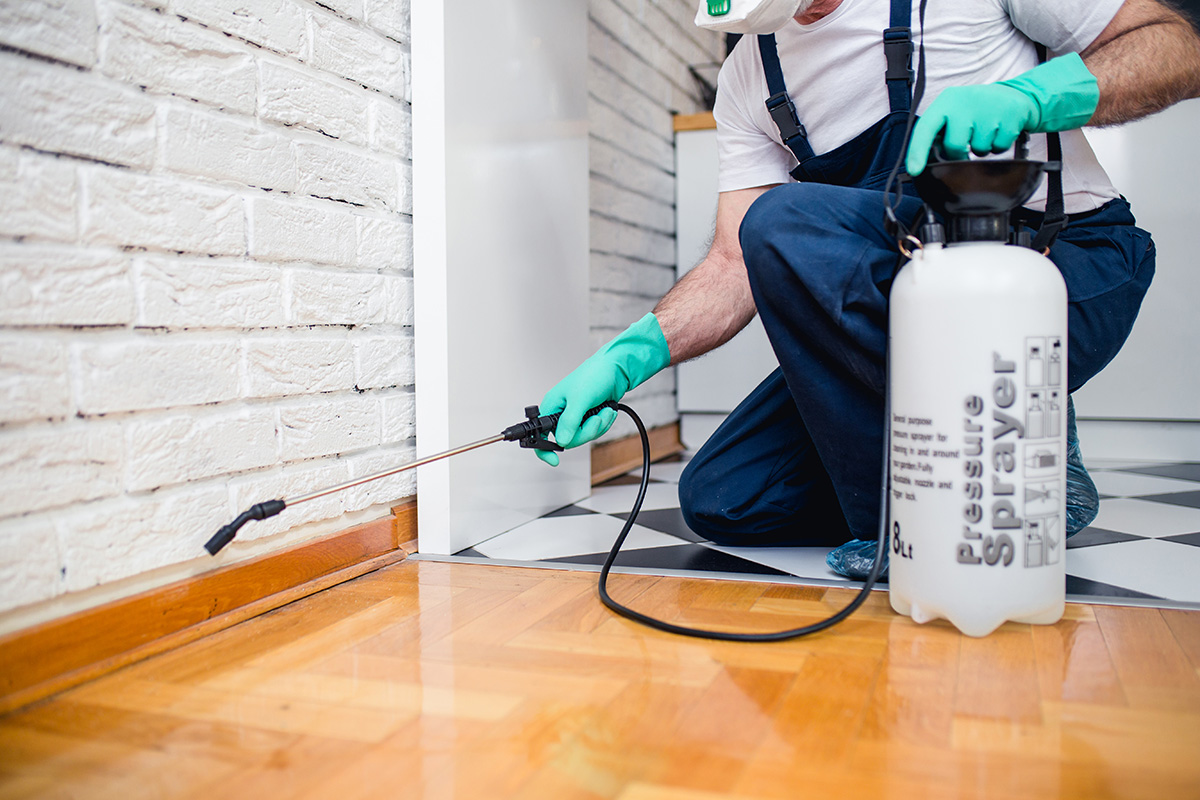Understanding the Art of Insect Control: Proven Approaches for Long-Term Avoidance and Removal
By mastering the art of bug control with tested techniques for long-term prevention and removal, one can establish a positive defense against possible hazards. Understanding the actions of parasites, carrying out integrated insect management strategies, and using natural solutions are just a few vital elements vital to achieving lasting success in this undertaking.
Comprehending Pest Habits
To effectively execute insect control methods, it is crucial to understand the intricate behaviors exhibited by various bugs in various atmospheres. By researching these habits, bug control experts can determine the most prone factors in the bug's life cycle to target interventions a lot more successfully.
Knowing this, parasite control professionals can focus on securing entry factors and removing food attractants to hinder these bugs. By addressing dampness issues and securing cracks and holes, infestations can be dramatically minimized.
Executing Integrated Parasite Administration
Applying Integrated Insect Management includes making use of an alternative approach to resolve pest problems by combining different control methods and techniques. This approach emphasizes prevention, surveillance, and control of bugs via a combination of biological, social, physical, and chemical treatments. By integrating several strategies, Integrated Parasite Management (IPM) intends to minimize the use of chemicals while effectively managing pest populations.
One trick facet of IPM is identifying the particular bug trouble and understanding its habits and life cycle. This understanding aids in determining the most suitable control procedures to execute. Avoidance is additionally a basic concept of IPM, concentrating on eliminating elements that attract insects, such as sanctuary, water, and food. Normal monitoring and inspection are vital to find parasite problems early and prevent them from escalating.
Moreover, IPM promotes the usage of eco-friendly and sustainable parasite control approaches to decrease harm to non-target microorganisms and the bordering community - a1 pest control portland bed bugs. By adopting an Integrated Insect Management strategy, people and businesses can properly handle pests while lowering dependence on chemical pesticides
Using Natural Treatments
Building upon the structure of Integrated Pest Administration, a shift in the direction of utilizing natural remedies offers an environmentally friendly approach to pest control. Natural solutions harness the power of nature to discourage and eliminate bugs without using severe chemicals that can damage the environment, human beings, and useful microorganisms.

In addition, planting pest-repelling plants like marigolds, lavender, and mint around yards and homes can assist deter pests normally. These plants discharge odors that pests discover unpleasant, driving them away without the demand for chemical intervention.
Keeping Tidiness and Hygiene

Regularly checking and cleaning hard-to-reach locations such as behind appliances, under sinks, best pesticide for termites and in storage space closets is important for recognizing and eliminating possible pest environments. Mess ought to be decreased as insects usually seek haven in piles of things or particles. Executing a regular cleaning routine and ensuring all members of the home or staff members are educated on correct health methods can go a lengthy way in parasite prevention. By preserving sanitation and hygiene requirements, the setting comes to be less welcoming to pests, ultimately supporting long-lasting bug control initiatives.
Normal Inspections and Monitoring
Regular evaluations and checking play a crucial duty in proactively determining and addressing prospective bug issues prior to they intensify. By conducting regular evaluations of both the interior and outside of a residential property, insect control specialists find here can discover early signs of invasions, pest entry points, and problems favorable to parasite activity.
Constant surveillance enables the very early detection of bug troubles, enabling quick intervention to stop widespread invasions that can be pricey and challenging to eradicate. Furthermore, normal inspections and keeping an eye on aid to abide by regulatory requirements and preserve a secure, pest-free setting for occupants. Executing an aggressive strategy through routine evaluations and tracking is a keystone of reliable bug monitoring, offering peace of mind and long-lasting defense versus parasite threats.
Conclusion
To conclude, grasping the art of insect control includes understanding bug habits, executing incorporated bug administration, using all-natural treatments, preserving tidiness and hygiene, and performing routine assessments and tracking. By complying with these tested methods for long-lasting prevention and removal, individuals can effectively take care of parasite problems and produce a healthier and more secure setting on their own and their surroundings.
To efficiently execute pest control approaches, it is essential to understand the complex behaviors exhibited by numerous insects in different settings (a1 portland pest control bed bugs). By researching these habits, insect control professionals can recognize the most susceptible factors in the insect's life cycle to target treatments a lot more effectively
Applying Integrated Insect Monitoring includes making use of an alternative approach to attend to pest problems by combining different control tactics and methods. By maintaining tidiness and health standards, the setting becomes less hospitable to insects, inevitably supporting long-lasting parasite control efforts.
By carrying out normal evaluations of both the inside and outside of a property, insect control specialists can spot early indicators of infestations, insect access points, and conditions favorable to parasite activity.